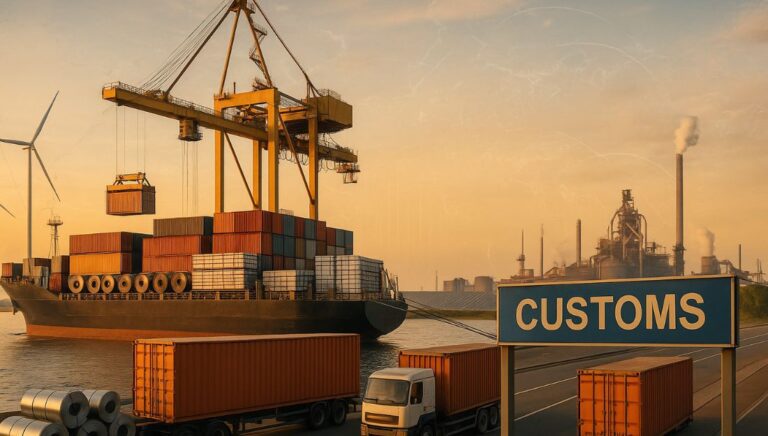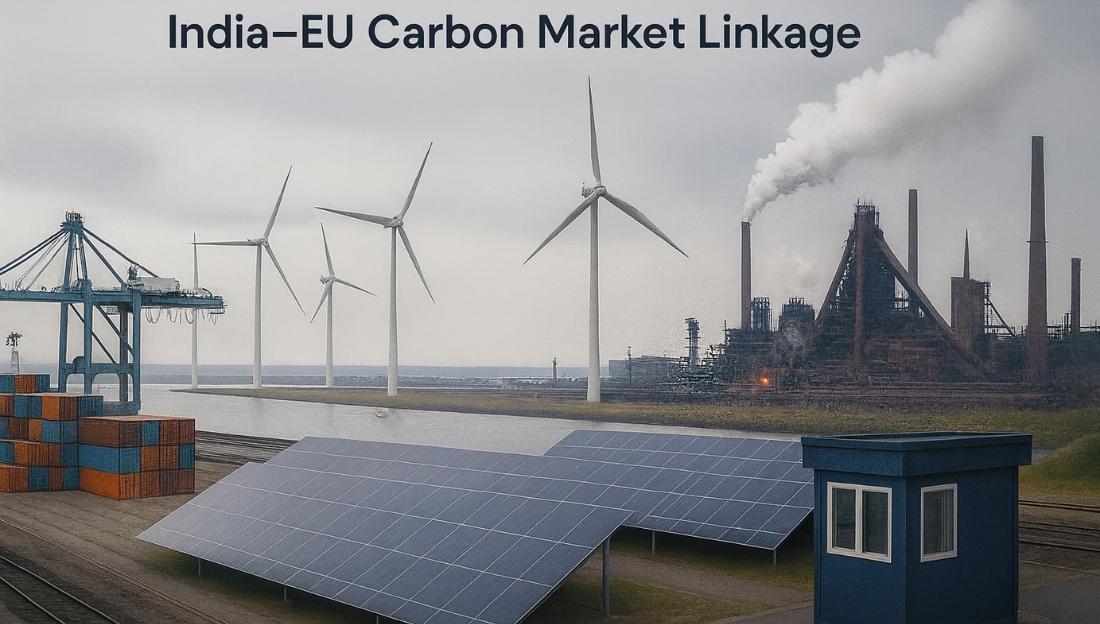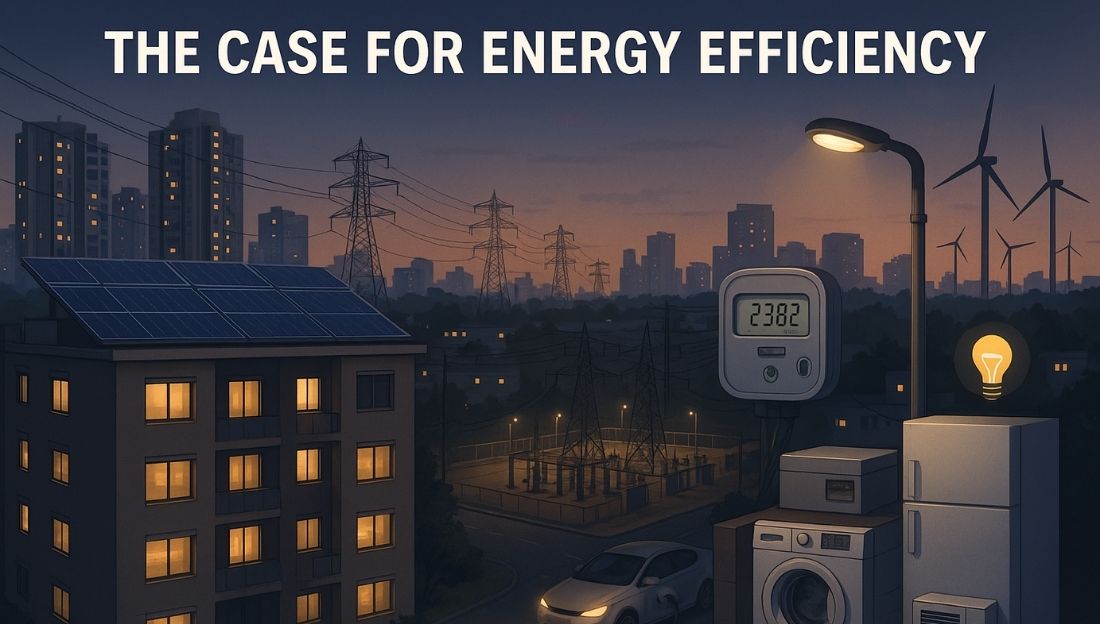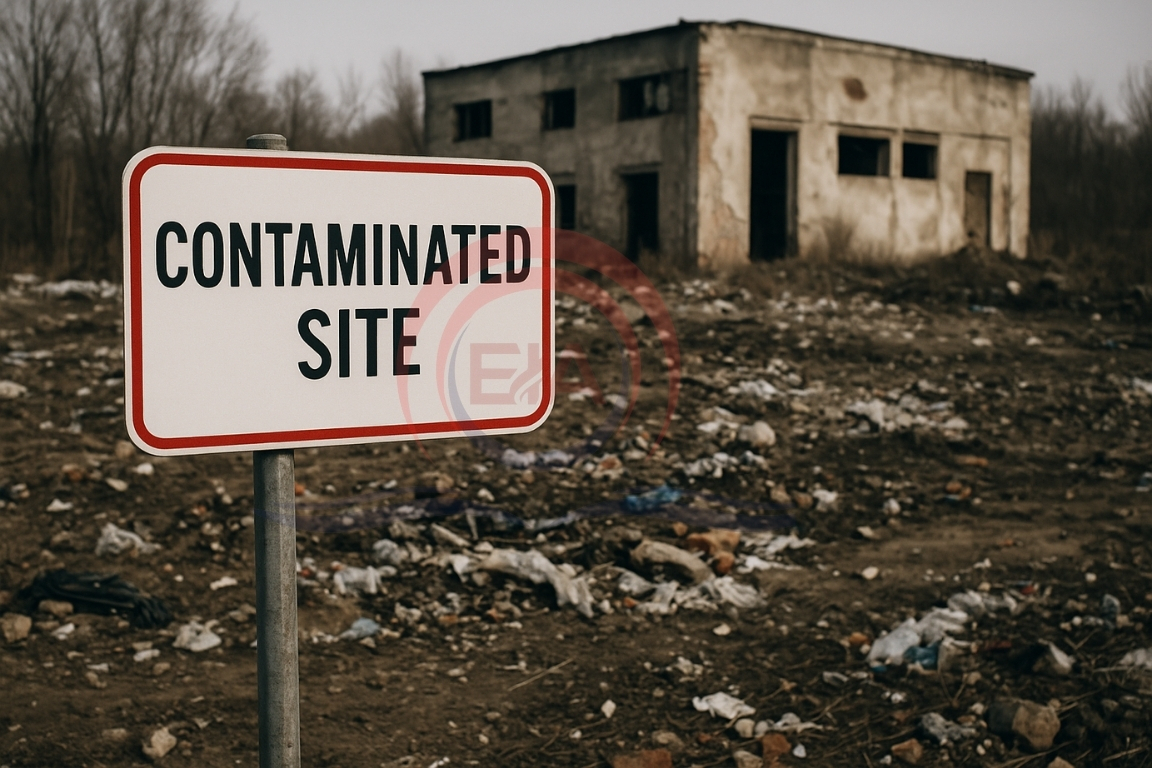India and the European Union (EU) recently announced in their New Strategic EU–India Agenda (September 2025) that the Indian Carbon Market (ICM) will be linked with the EU’s Carbon Border Adjustment Mechanism (CBAM).
Background
- The EU–India partnership focuses on five key pillars, including prosperity, sustainability, and clean transition.
- The proposed linkage means that carbon costs already paid in India could be deducted from CBAM levies at EU borders.
- This linkage, if implemented effectively, can make Indian exports more competitive while supporting low-carbon industrial growth.

India’s Carbon Market:
- India’s Carbon Credit Trading Scheme (CCTS), or Indian Carbon Market (ICM), is in an early stage.
- Unlike the EU Emissions Trading System (ETS), India’s market does not yet have:
- A fixed cap on emissions.
- Strong enforcement mechanisms for non-compliance.
- Independent regulatory institutions to ensure transparency.
- Current Indian carbon credits are project-based and focus on efficiency improvements, not absolute emission reductions.
- For CBAM linkage, the EU demands tonne-by-tonne verification of embedded carbon — something India must still develop.
Challenges in Linking with CBAM
- Price Gap: The EU’s carbon price averages €60–€80/tonne, while India’s is around €5–€10/tonne. Without comparable pricing, EU regulators will not allow meaningful deductions, leaving Indian exporters at a disadvantage.
- Double Burden Risk: Indian industries may face both domestic carbon costs and EU border taxes. This could trigger political pushback and pressure to weaken India’s carbon market compliance rules.
- Institutional Weakness: India lacks independent verification systems and emission registries similar to the EU’s, undermining credibility.
- Political and Trade Tensions: Developing countries, including India, have opposed CBAM at WTO forums as protectionist.
Way Forward:
- Strengthening the ICM: India must adopt binding emission caps, transparent registries, and credible verification standards.
- EU’s Role: The EU should provide technical assistance and policy guidance to align both systems.
- Negotiating a Fair Price Framework: Both sides could work on a sector-specific or floor carbon price to reduce the cost gap.
- Ensuring Policy Stability: India must maintain consistent domestic rules to avoid disruption in trade and investor confidence.
CARBON BORDER ADJUSTMENT MECHANISM (CBAM)
- CBAM is a carbon tax imposed by the European Union (EU) on imports from countries with weaker climate policies.
- It aims to prevent “carbon leakage” — when companies move production to countries with lax emission rules — and promote cleaner manufacturing globally.
- It affects Indian exports like steel, cement, and aluminium, making them costlier in EU markets unless they meet strict carbon standards.
Conclusion
The proposed India–EU carbon market linkage represents a landmark step toward equitable global climate cooperation. If executed well, it can protect Indian exporters, accelerate decarbonisation, and set a model for North–South collaboration in carbon trading.
This topic is available in detail on our main website.





